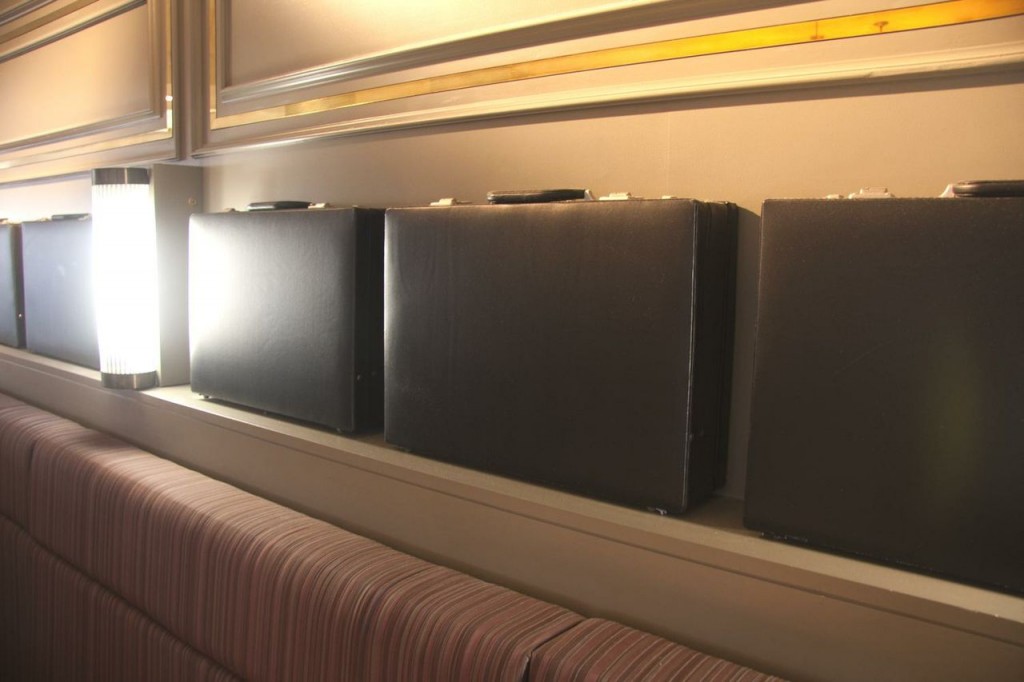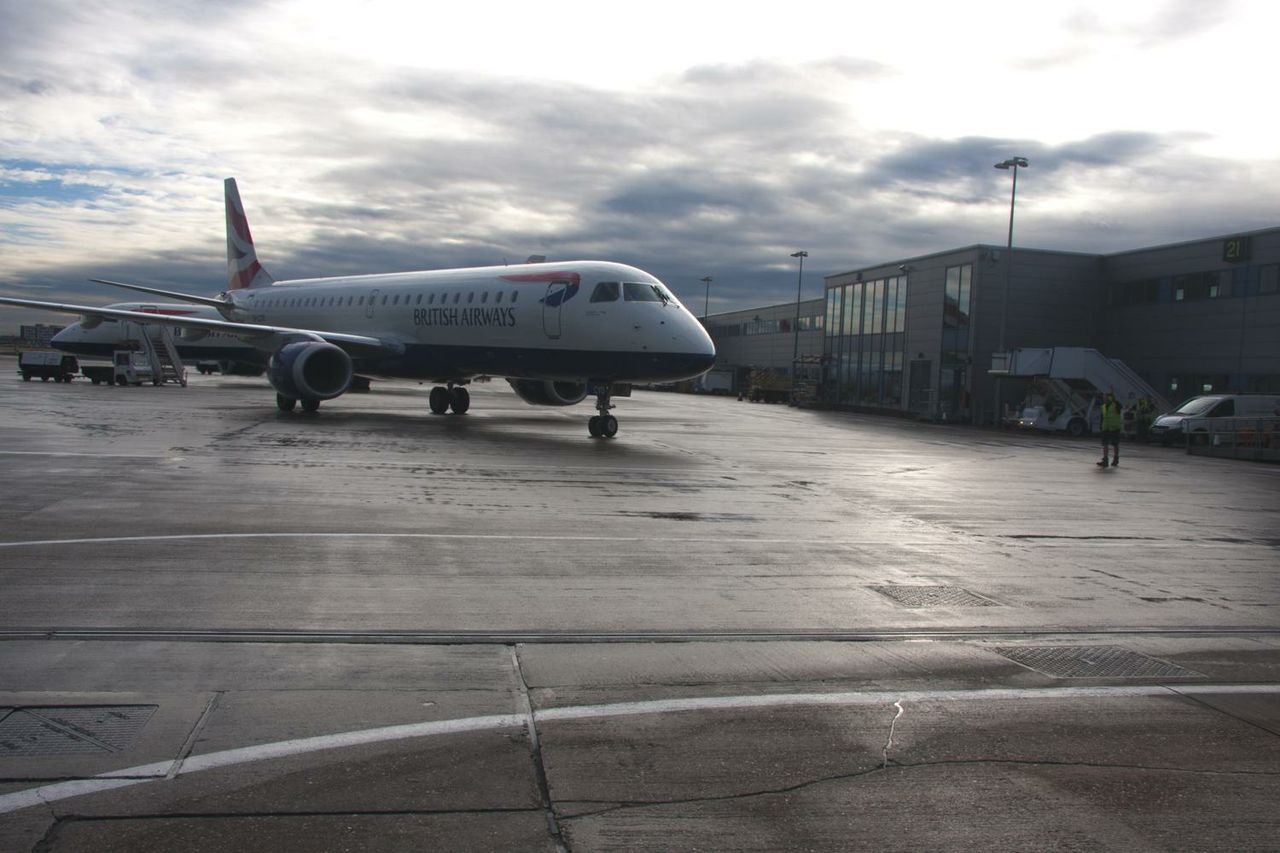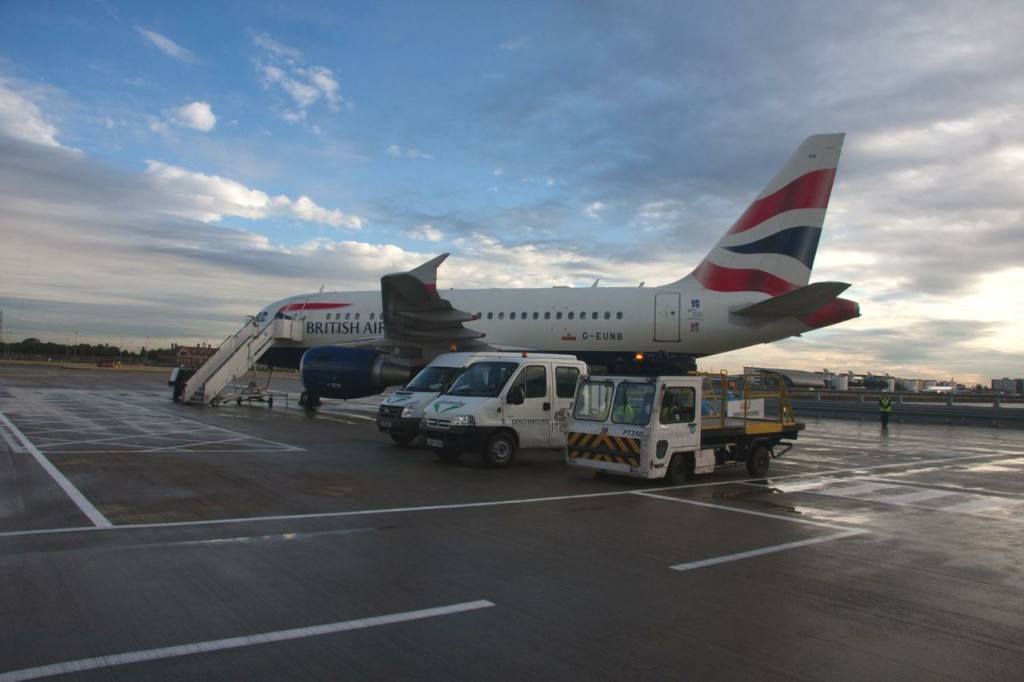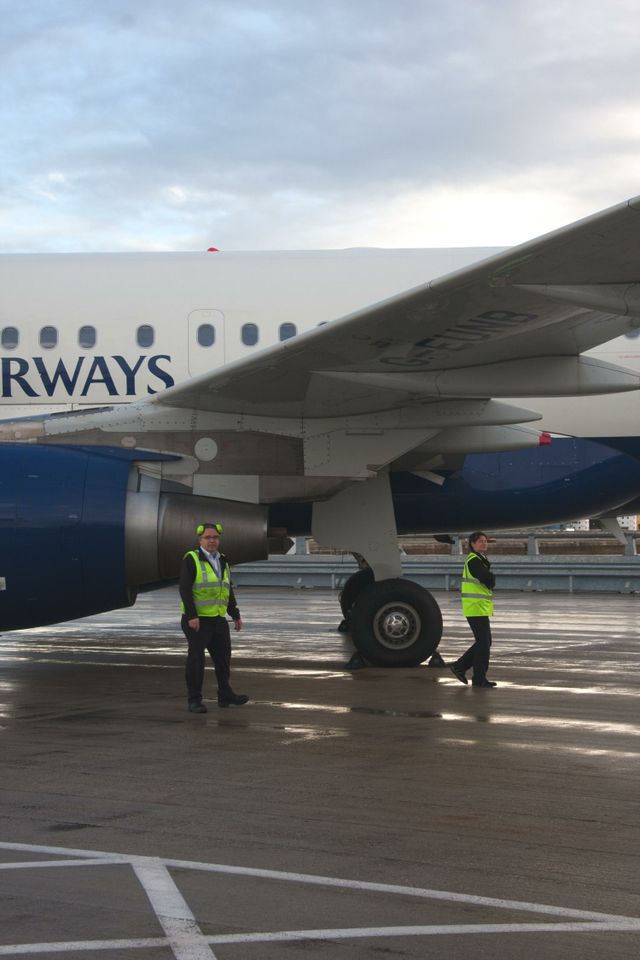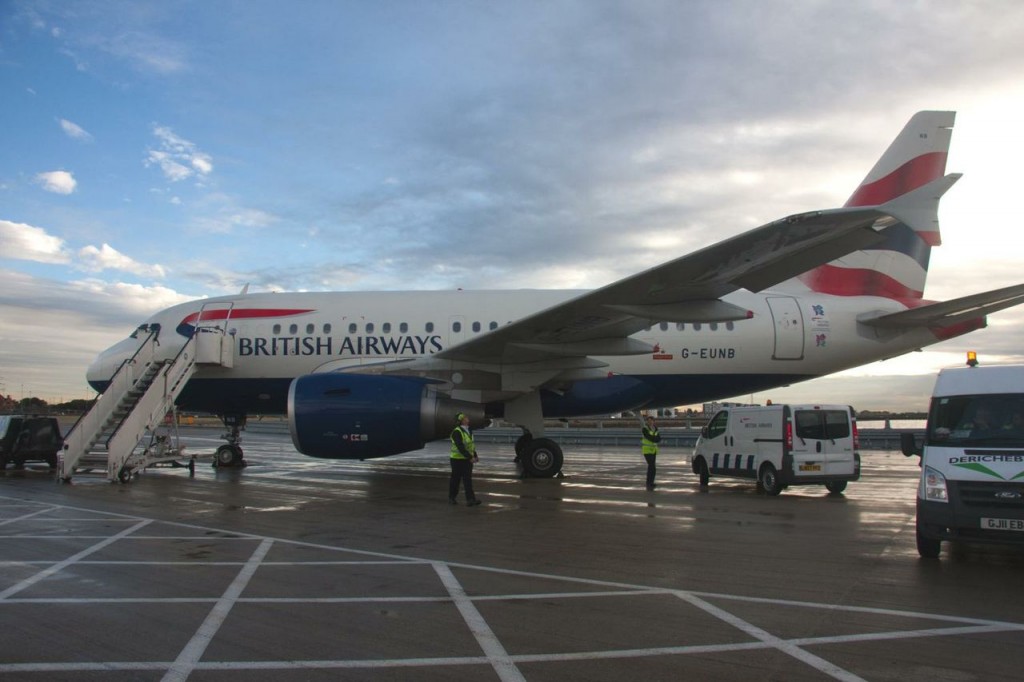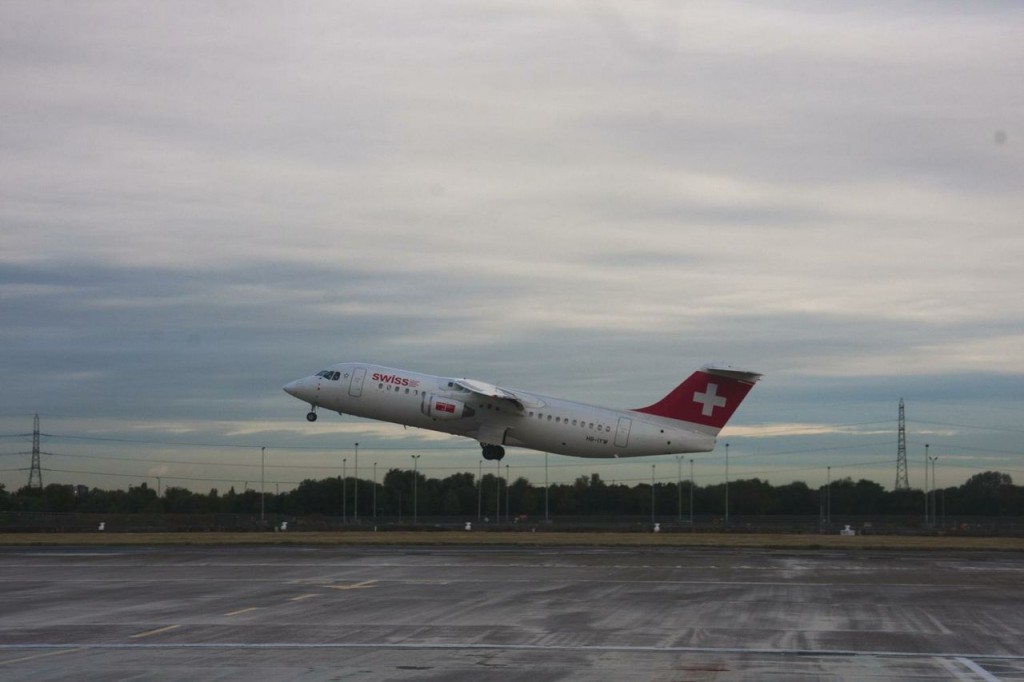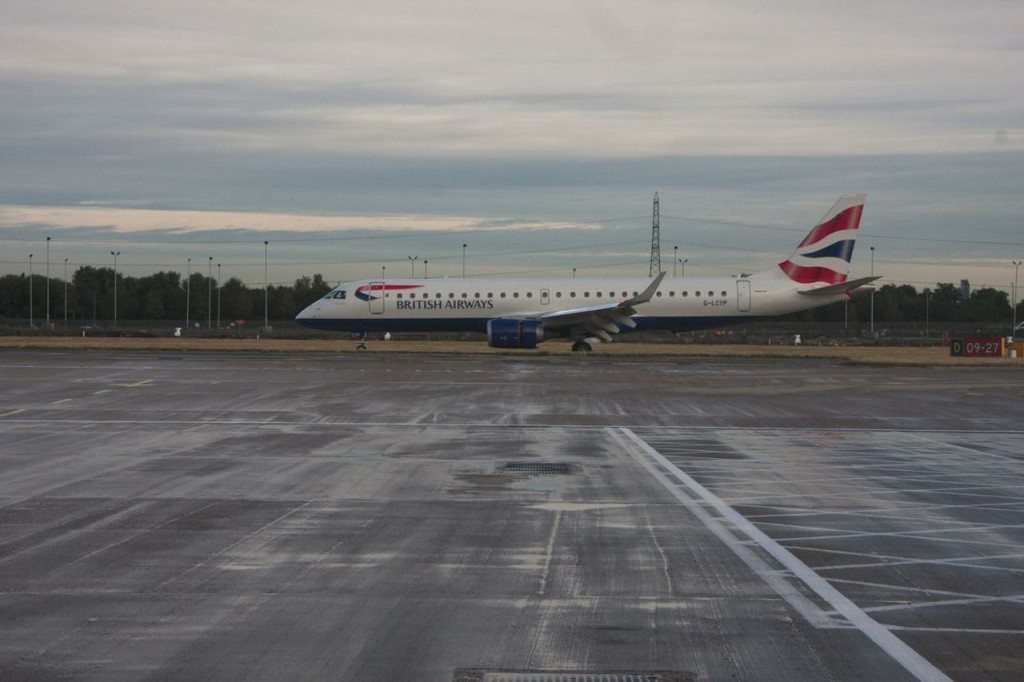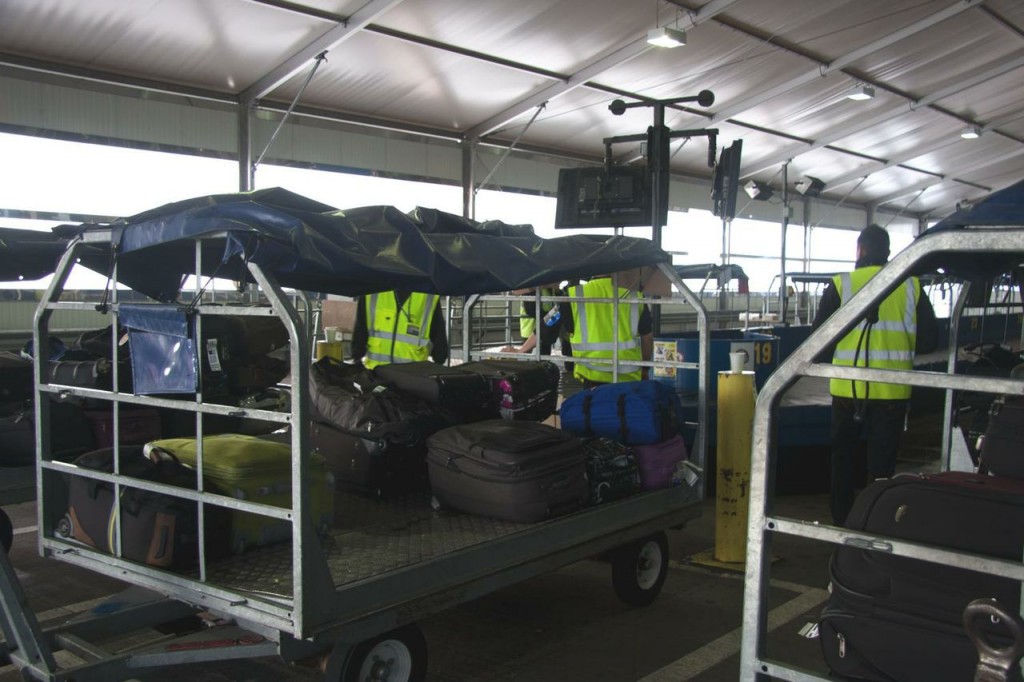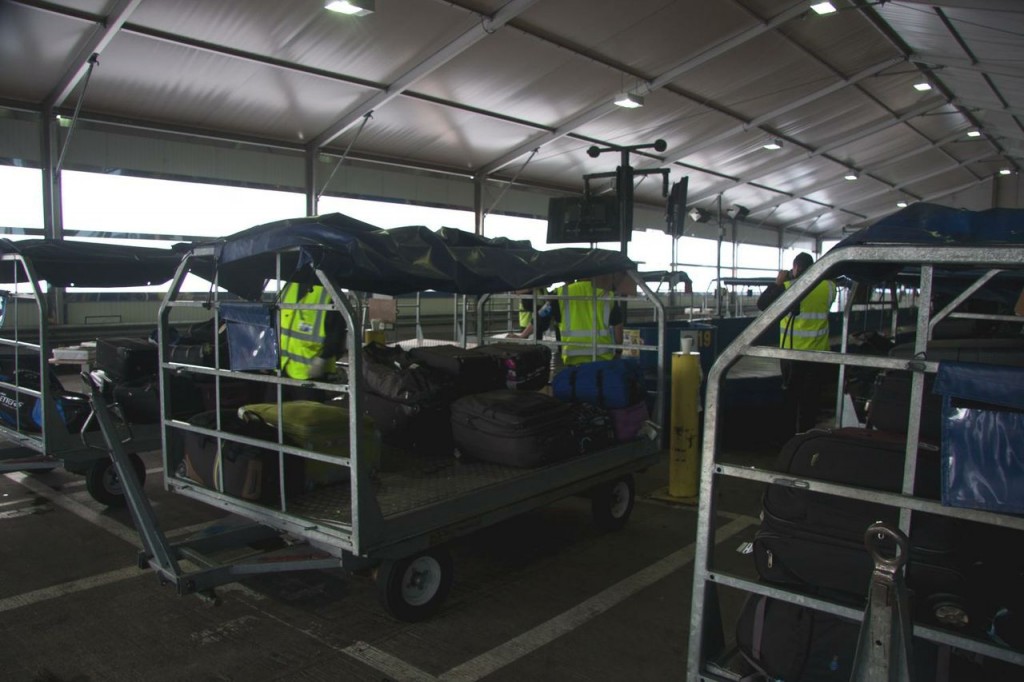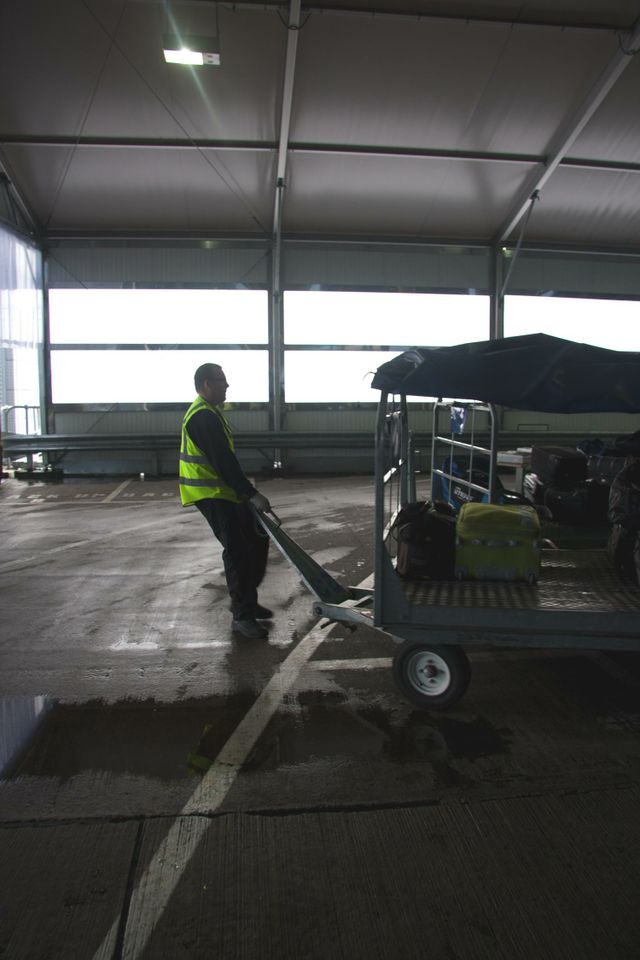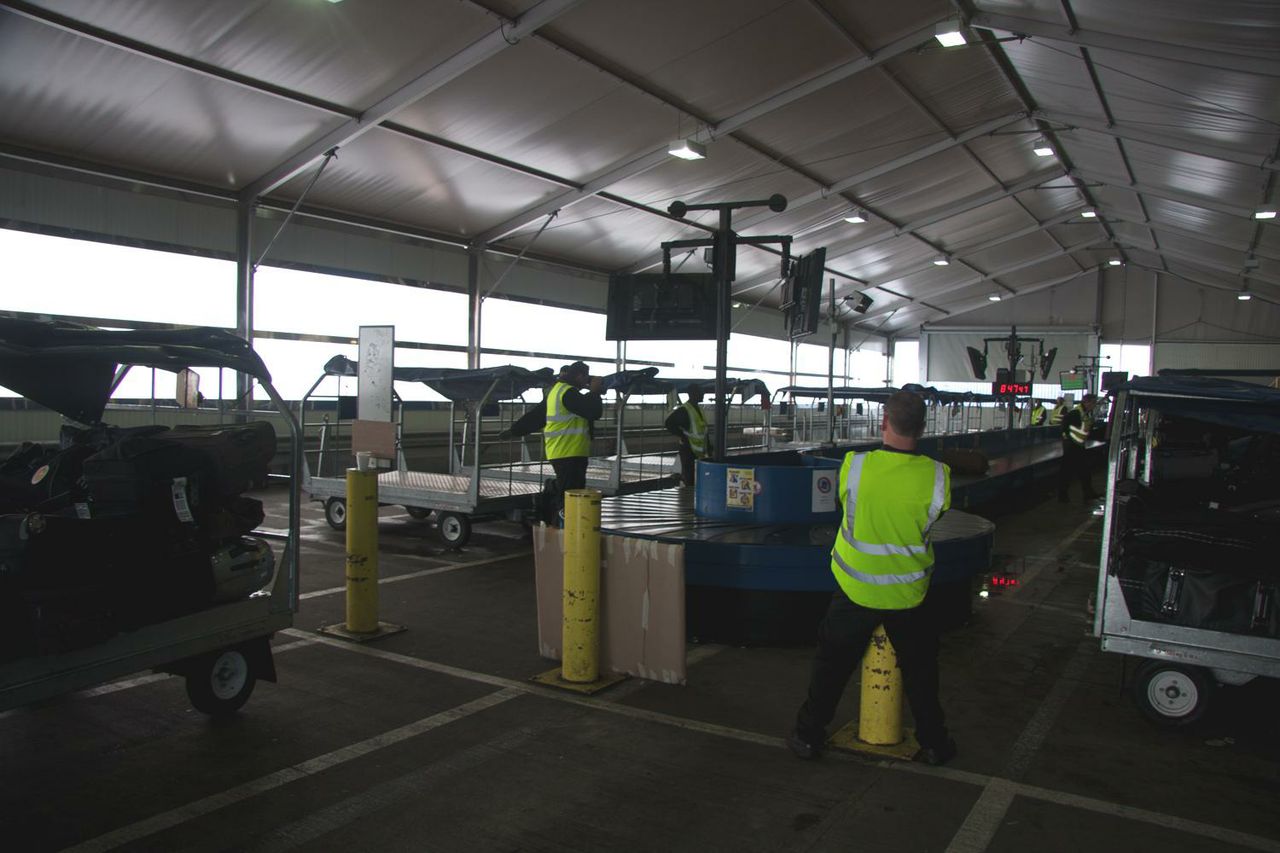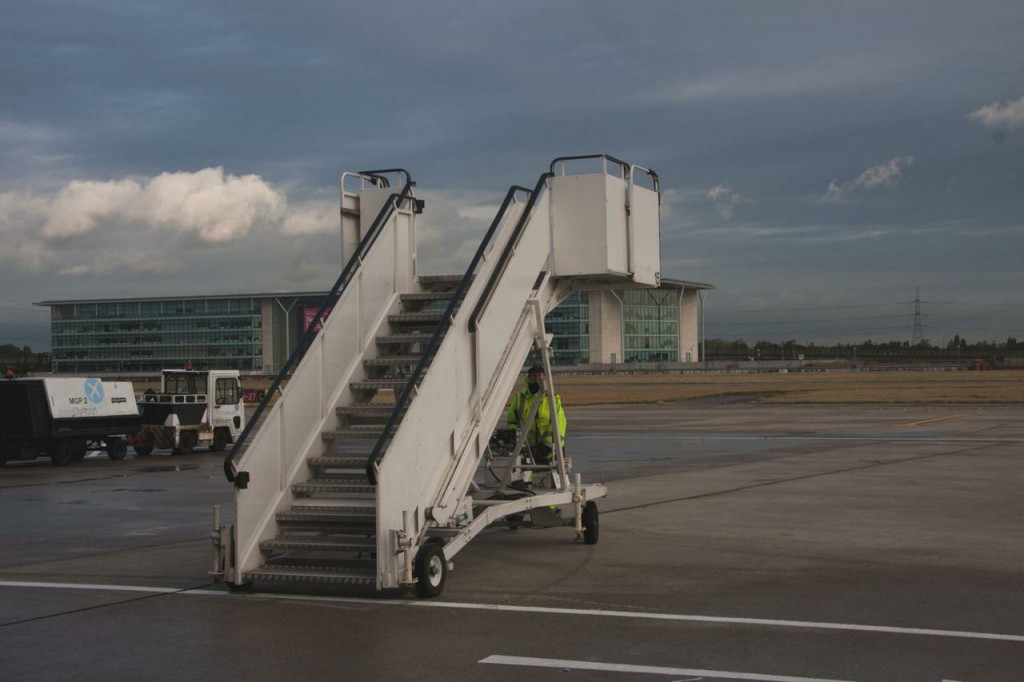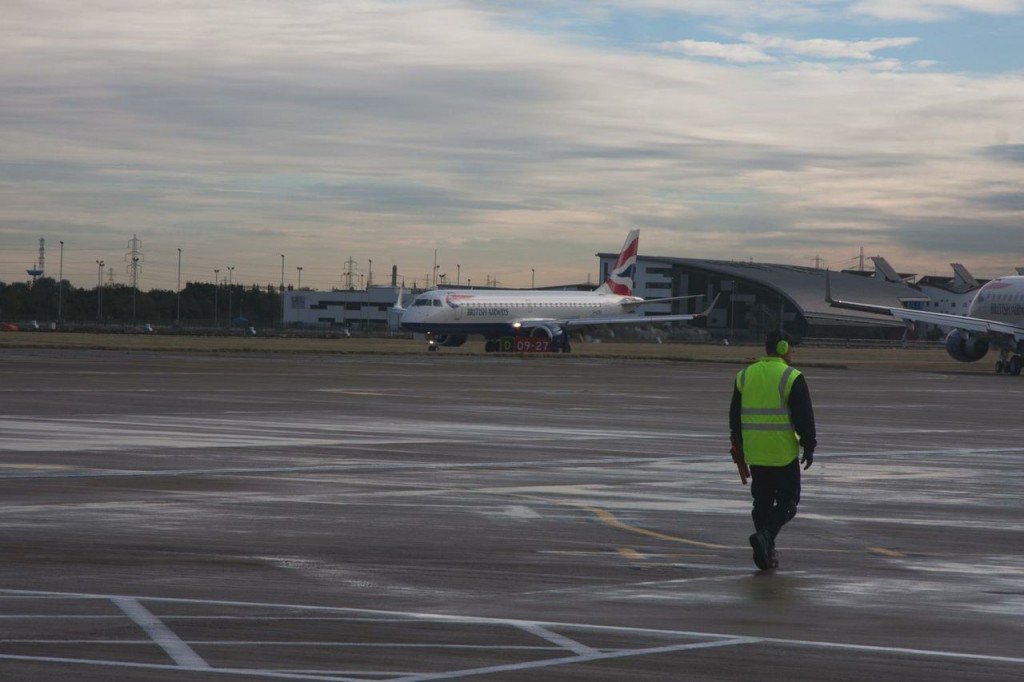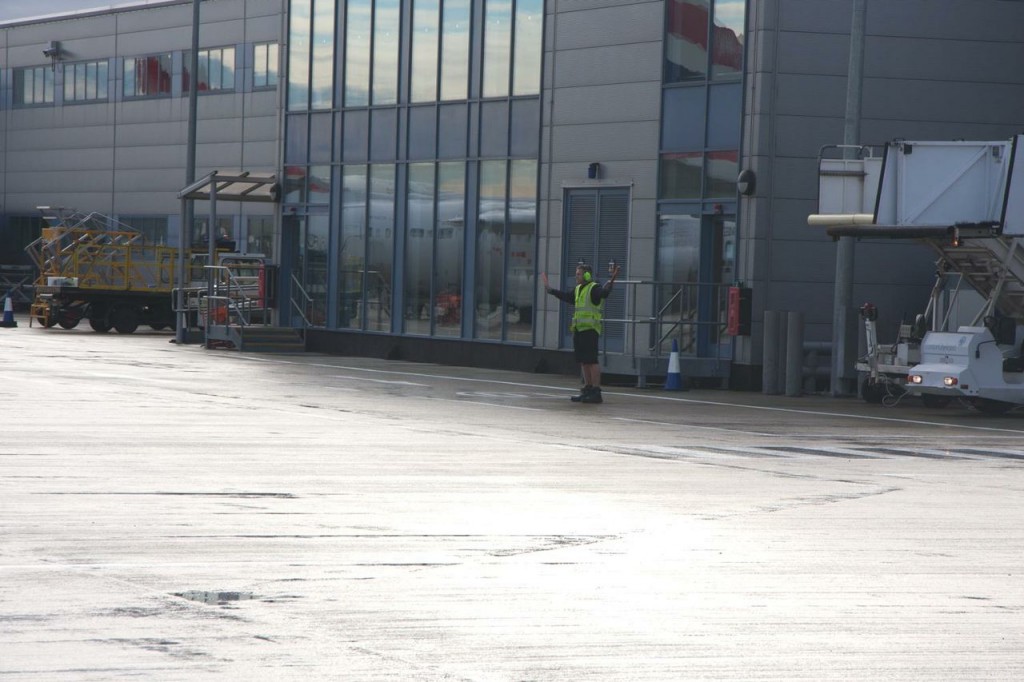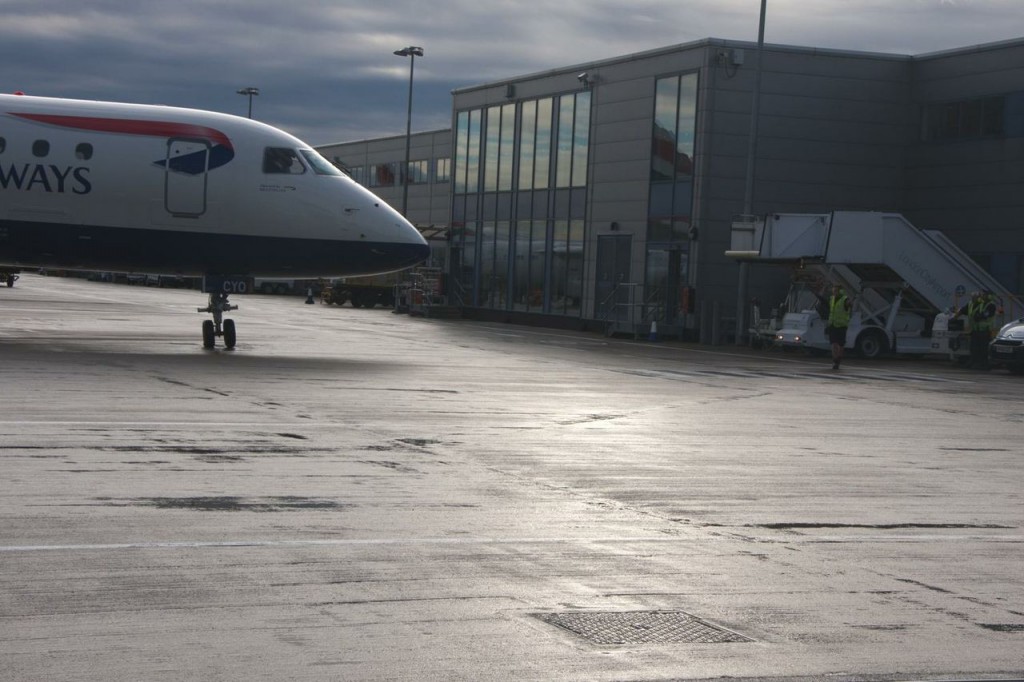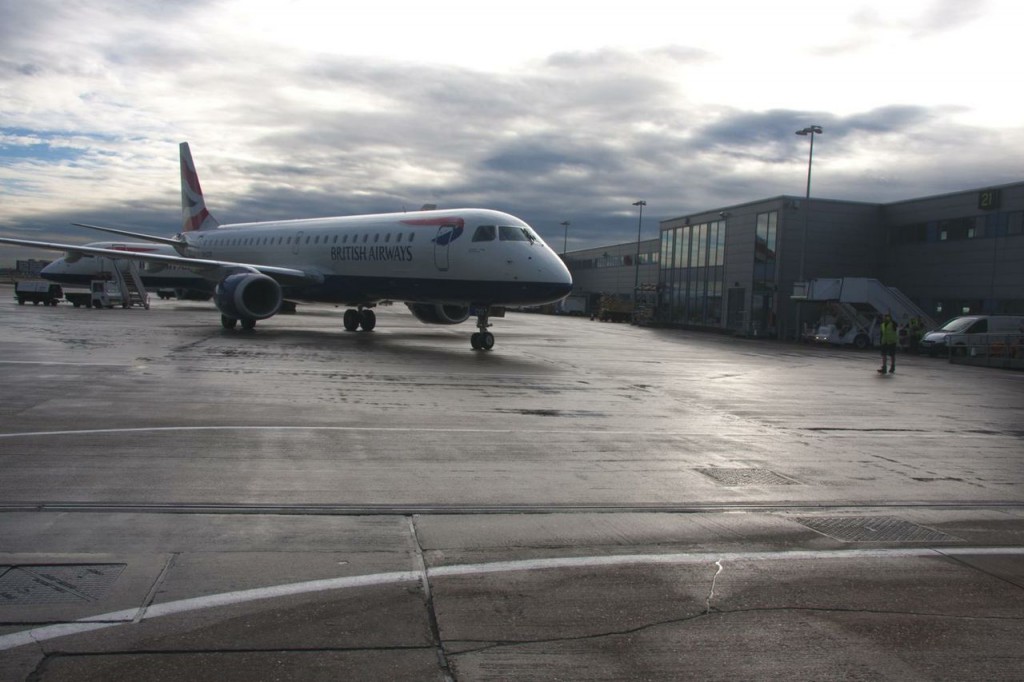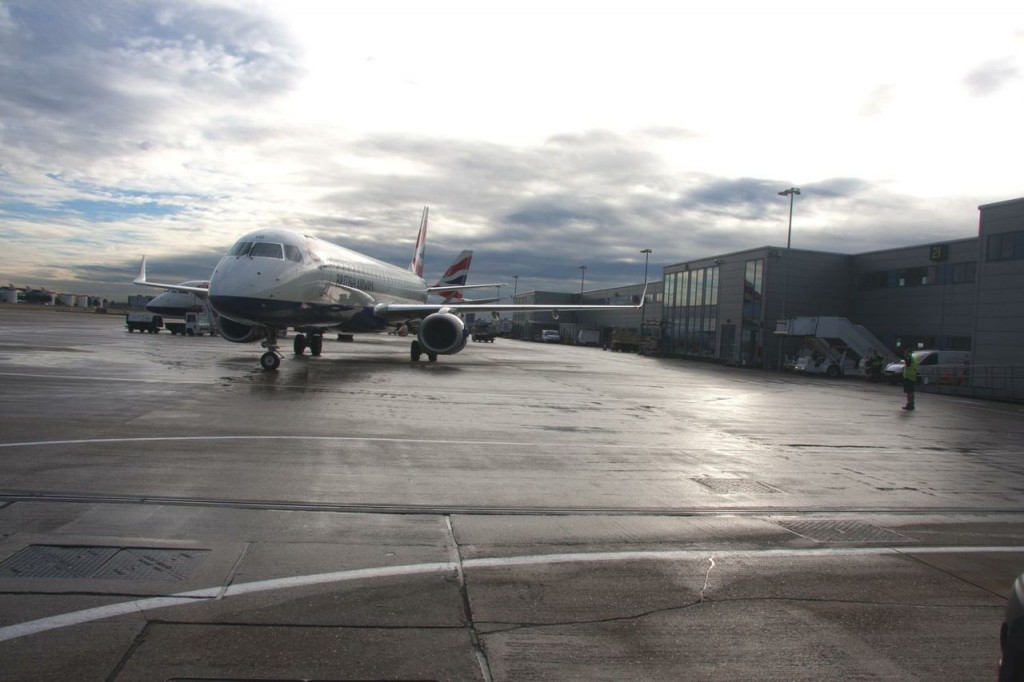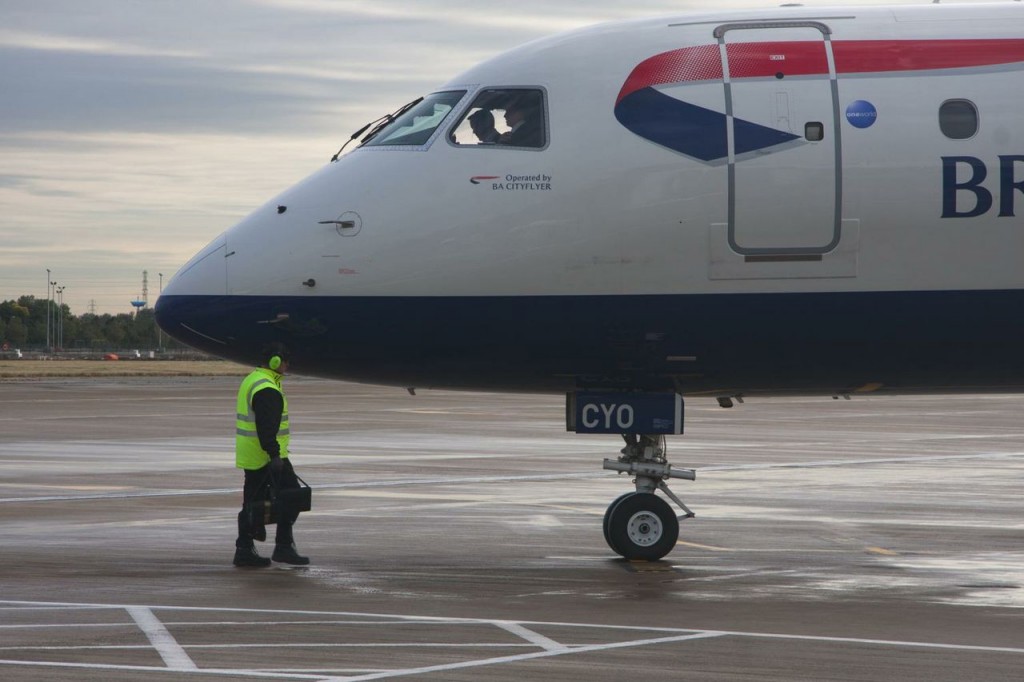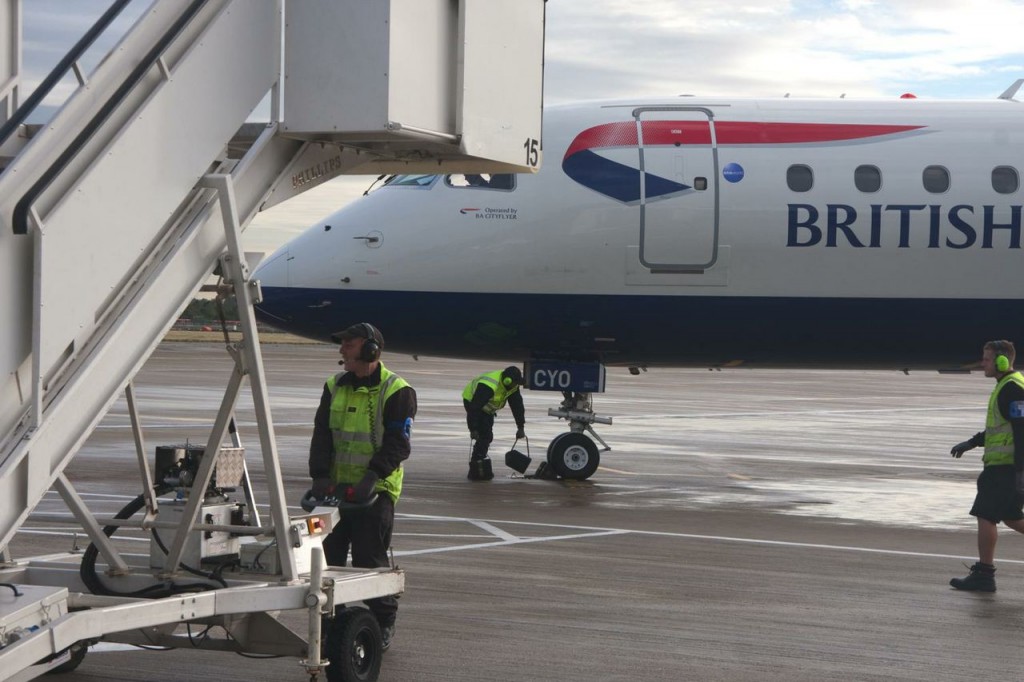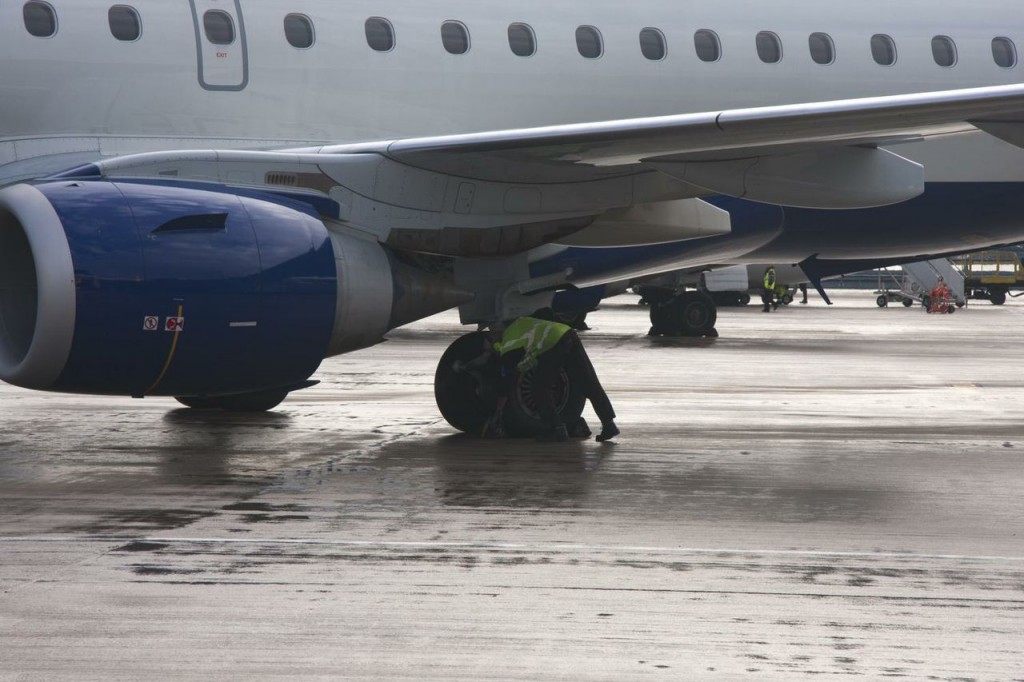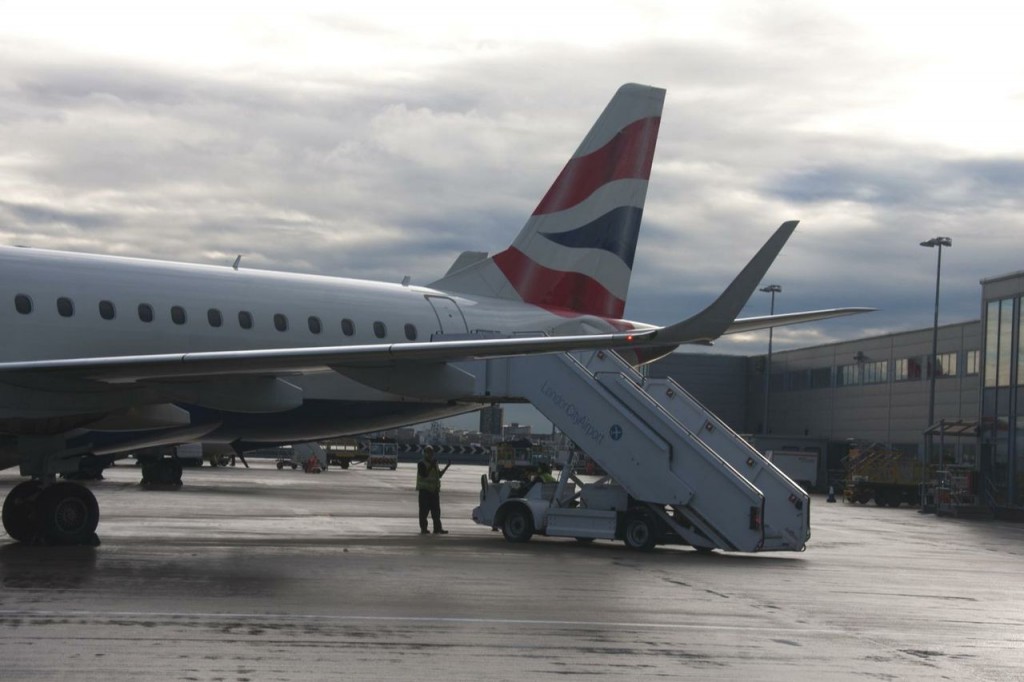Behind the Scenes: London City Airport – Ramp Walk 2: Future Plans
- Behind the Scenes: London City Airport: The Introduction
- Peak rush to London, aLoft ExCeL
- Morning time at LCY – Inspecting runway lights
- Ramp Operations
- At the JetCentre
- Ramp Walk 1
- Ramp Walk 2 (THIS SECTION)
- From the Tower
- Watery Inspections with the Fire Service
- Leaving London and Final Thoughts
Note – this section may take a bit to load – there’s a fair few photos coming up! –
Also, apologies for the delay in this post – things have been a mite busy in real world as I’m ramping up to another Chicago trip…
After a great breakfast, it was time to continue the tour of the airport – with a walk down to Gate 23/24. Gate 23 is where the BA1/3 services depart. This end of the airport is the interesting bit too – as this is where the planned expansion ofg the airport will occur – as Gate 23/24 are over water and are built on stilts. To expand gates and extra space, expect more expansion from Gate 24 onwards in the future.
We dropped into Gate 23 – the British Airways Club World London City Airport departure gate.
Gate 23 Departure Lounge
Not flying today… but thank you!
Walking onto the ramp, G-EUNB was resting after its long leg from New York and was being serviced
Ground crew checking G-EUNB out
Meanwhile, LCY arrivals and take offs were abound – this being the rush hour.
London City’s major tenants are CityJet (by the number of flights) and BA CityFlyer (by passengers).
By airline alliance it’s a slightly different picture with the following breakdown:
- 36% of Traffic is Oneworld traffic (through BA CityFlyer and SunAir for BA)
- 36% is SkyTeam traffic (through CityFlyer, Air France and Alitalia)
- 23% is Star Alliance Traffic (through Lufthansa and Swiss)
- 6% through other operators who are non aligned to a major alliance (Aer Arran, Blue Islands, Luxair and SkyWork)
Whilst the airport has no major maintenance facilities (for the very simple reason – a lack of space), it does allow night-stopping of aircraft so they are in position for the next day.
Checked luggage – although minimal to some hubs is still an important operation at London City Airport as it handles both checked bags and cargo consignments.
Luggage loading/unloaded moving belt…. moving.
Luggage at City is much less complex affair, with a luggage going through the check-in belt, then through screening and then onto a recption belt where bags are sorted for flights in one hall. Bags are then consolidated by hand to match up with the manifests.
Luggage then goes out to the plane and consolidated again so numbers tally and matches the fuel estimates that the captian needs to get their plane to the destination.
Whilst not a massive operation, it still is a hive of activity when the airport is active.
As we exited the luggage area, a BA CityFlyer E190 was coming in to its stand – and if you never seen the actitvity that goes on when a plane comes into land at this airport its an intresting sight.
Firstly Ground Crews, Ground Power and other departments are ready to handle the arrival
The inbound E-1×0 coming in
The plane is guided in the old fashioned way – two battons and brave person marshalling in the plane to the stand area.
As the plane comes in closer towards the terminal building, the plane must turn. Here, the marshal is directing the plane to turn right and come around.
The plane is turning still under the marshal’s instructions.
The plane is now almost turned, with 90dregrees or so of turn to go.
The plane now turned, and set for its departure point and now “on stand” can now power down be chocked. The chocks now go on the forward gear.
With the first set of chocks going on, the ground team goes into action, docking steps and preparing to accept the passengers aboard the flight.
The second set of chocks go on, and the rest of the crews move in to service the aircraft on a tight turnaround. Soon enough this E-Jet will take to the skies again.
The rear set of steps is attached to allow faster unloading. The plane is now almost ready to unload its passengers.
When watching the operation, you know its got to be tight and quick to turn planes around quickly, and to see it in action is like an organised ballet – and gives an insight into the operations that are needed to turn around a plane at this airport.
The airport has had some interesting wins recently in terms of traffic, with Alitaila coming to London City. In addition, Estonian Air is a major win for London City (as the airline is switching from 737’s and CRJ’s to an E-190 platform). Route development is an important subject for an airport that operates 44 routes, and there is always scope to add more services – alas peak time services may be slightly problematic due to the lack of stands at peak hours.
Still, if the expansion goes ahead, this can only be good for this airport.
Coming up next: From the Tower!
Disclosure: London City Airport kindly supplied a hotel room at aLoft ExCeL to me to assist in this visit. Some details and factual information has been provided by London City Airport Corporate Communications Department.
All opinions expressed within this trip are my own, represent my own personal thoughts and my observations during the visit.
You can find out more about London City Airport at http://www.londoncityairport.com/
